

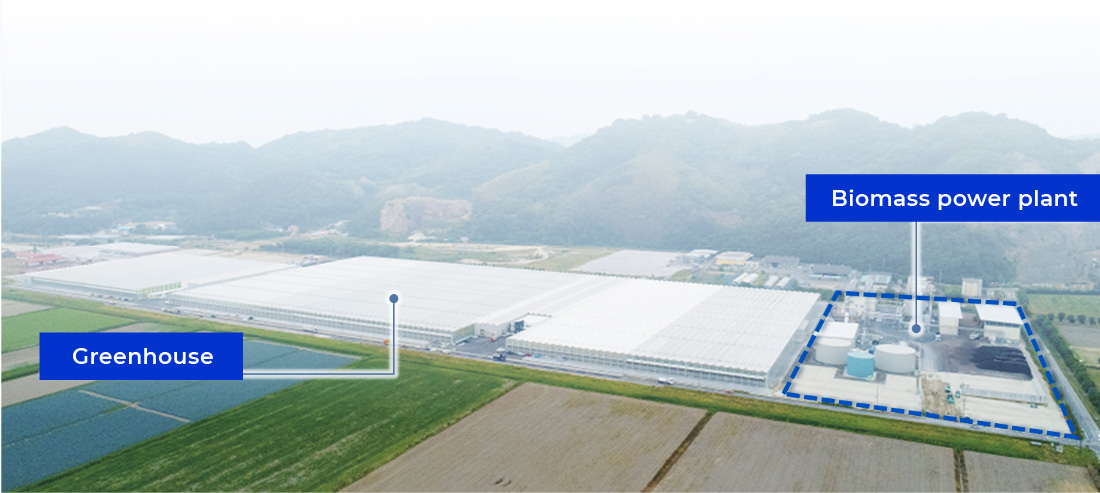
We are delivering a system (t-CarVe®) that allows greenhouses to directly utilize CO2-rich purified gas created by removing components that are harmful to vegetable growth from the combustion gases of wood biomass power plants.
Working with the National Institute of Advanced Industrial Science and Technology, we are conducting joint research to develop technology for separating and capturing CO2 using a chemical absorption method that utilizes non-water absorbent for use with CO2 in exhaust gases from biomass power generation and municipal waste incineration facilities. Under the Research, Development and Demonstration Project of CCUS Technology, which Takuma is carrying out with Nippon Paper Industries under contract from NEDO and which is conceived to yield energy savings and reduce the equipment footprint, we will research the targeted technologies, and we will look to use the absorbent to treat actual exhaust gases in the future as we evaluate its performance and work to commercialize it.
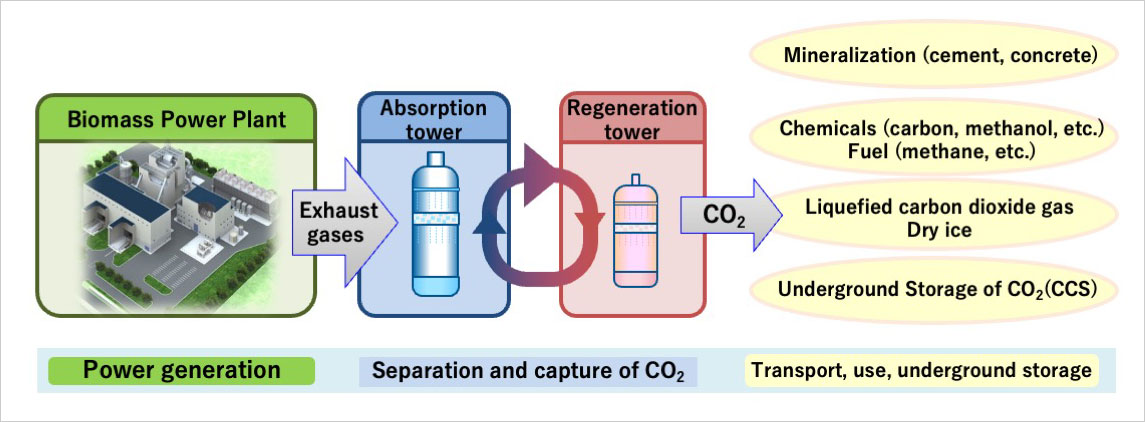
The use of oxygen instead of air when burning waste and biomass yields combustion gases that consist primarily of CO2 and H2O. Once the H2O has been condensed, the remaining CO2 can be easily separated and captured. We have begun studying CO2 separation and capture technology based on this oxygen combustion method.
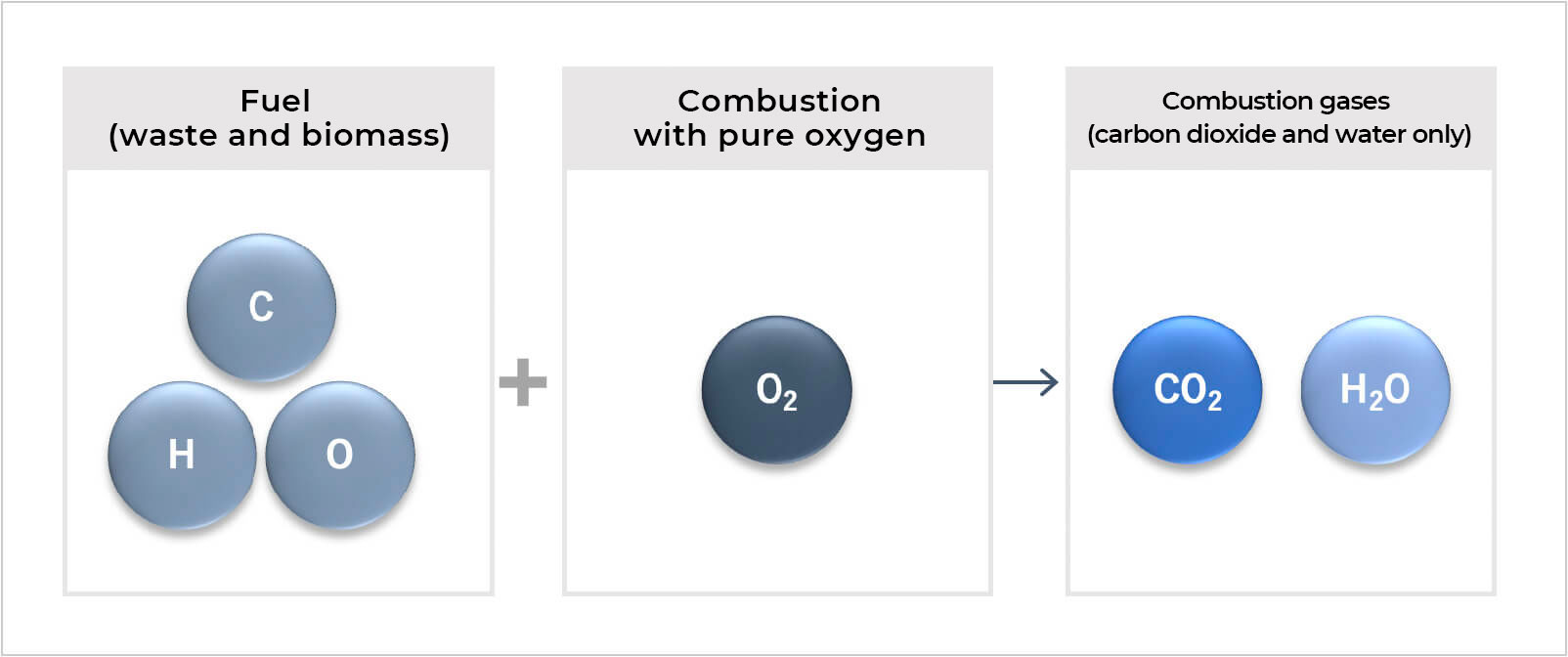
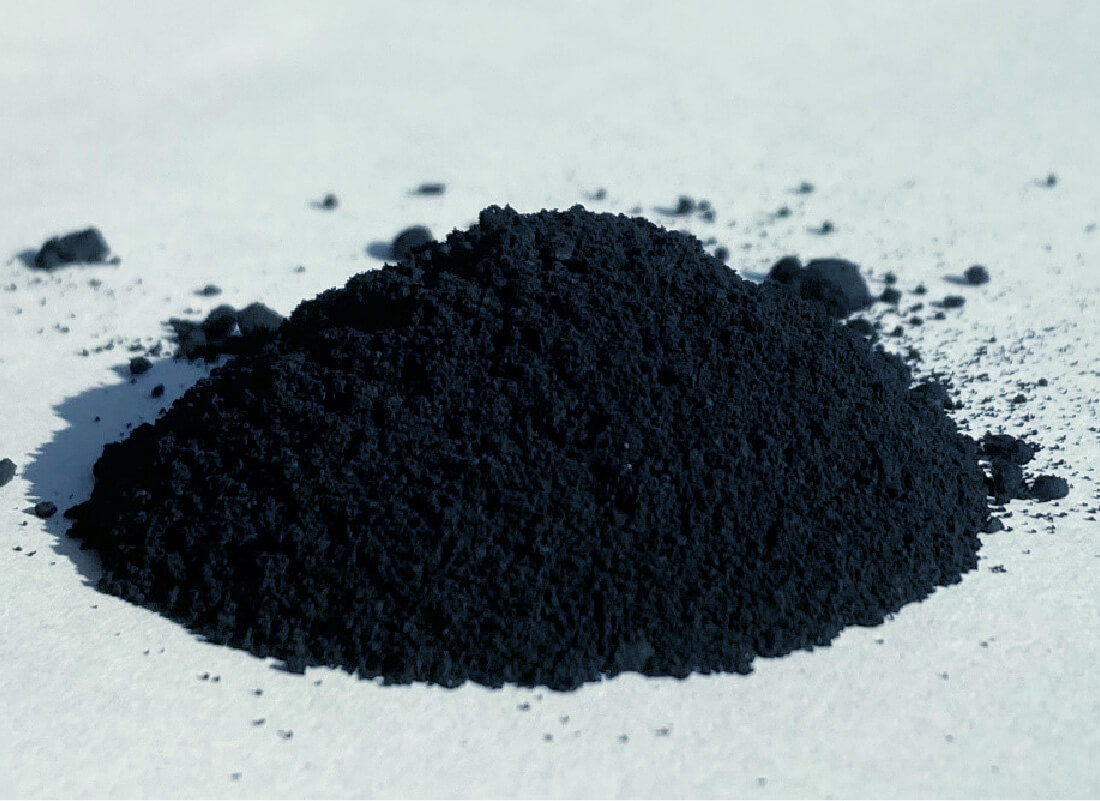
This technology manufactures solid carbon using CO2 separated and captured from the exhaust gases from municipal waste incineration and power generation facilities as the raw material and energy from the same facility. The solid carbon is expected to be used as a raw material for the manufacture of chemicals such as carbon black, and we are currently involved in a research and development project that is receiving technological guidance from Shizuoka University.
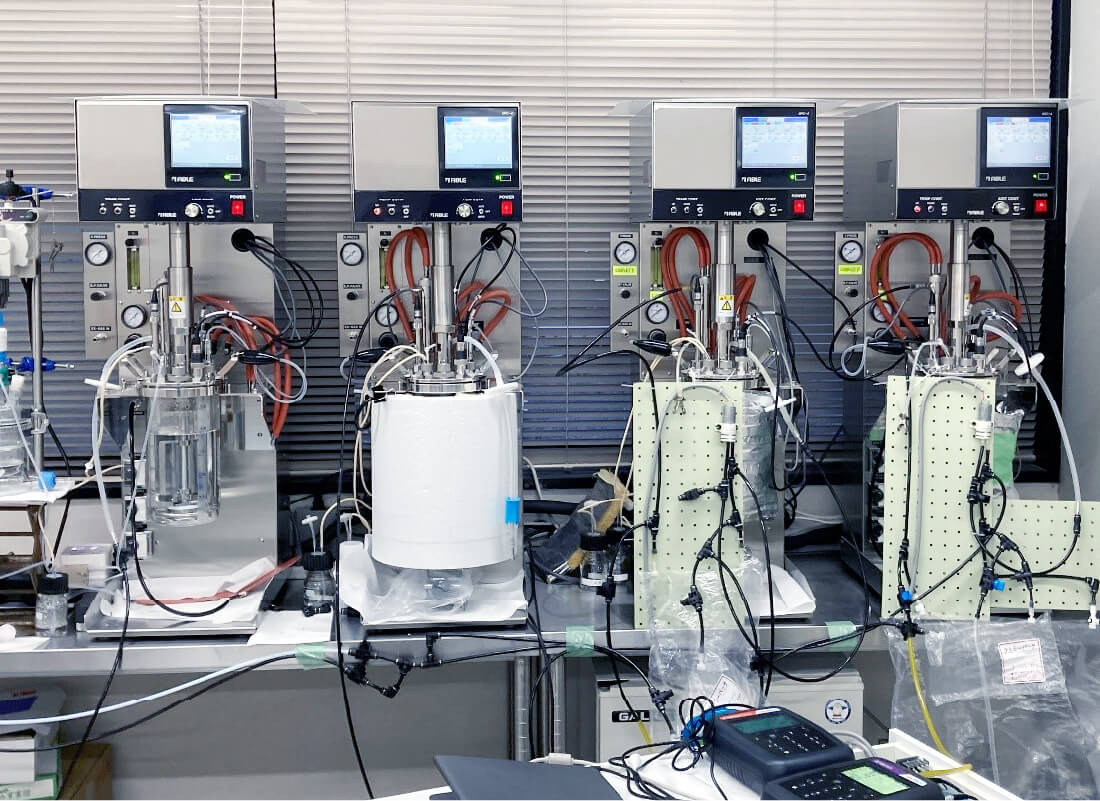
This technology converts biogas generated by the methane fermentation of garbage and other waste and CO2 contained in exhaust gases into high-concentration biomethane by adding hydrogen and relying on a microbial process. It is characterized by low facility energy consumption and high operational stability. The technology offers a high level of versatility since biomethane can be used as a fuel to generate electricity or as a substitute for natural gas, and we are currently conducting joint research with Kyoto University, Hokkaido University, the National Institute for Environmental Studies, Toho Gas, and Ebara Jitsugyo.
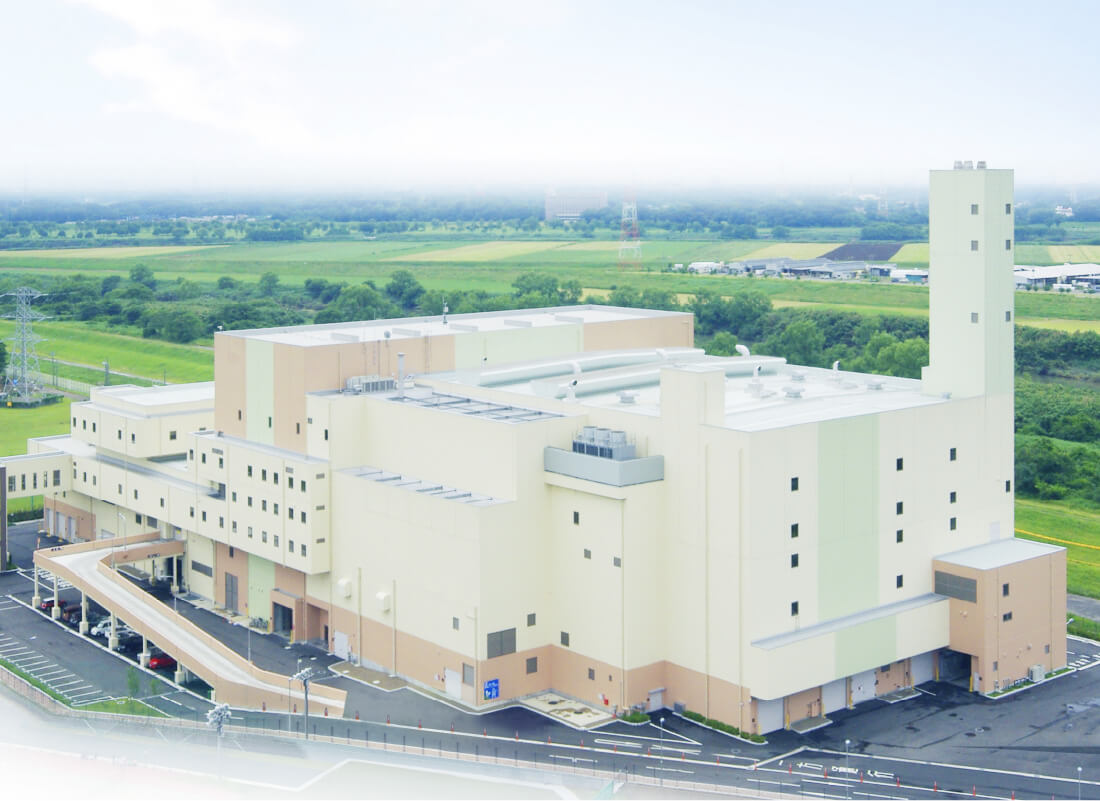
This technology breaks down waste and biomass with heat and converts it into carbon monoxide, hydrogen, and other gases, which can then be used as raw materials in the production of chemical products. Takuma has a track record of delivering its proprietary indirect heating and pyrolysis gasification and melting technology to municipal and industrial waste treatment facilities, which we also operate. We have also developed technologies for manufacturing methanol by gasifying wood biomass and for gasifying sewage sludge and using it to generate electricity. We're drawing on that knowledge to research and develop technology for recycling carbon through waste and biomass gasification.
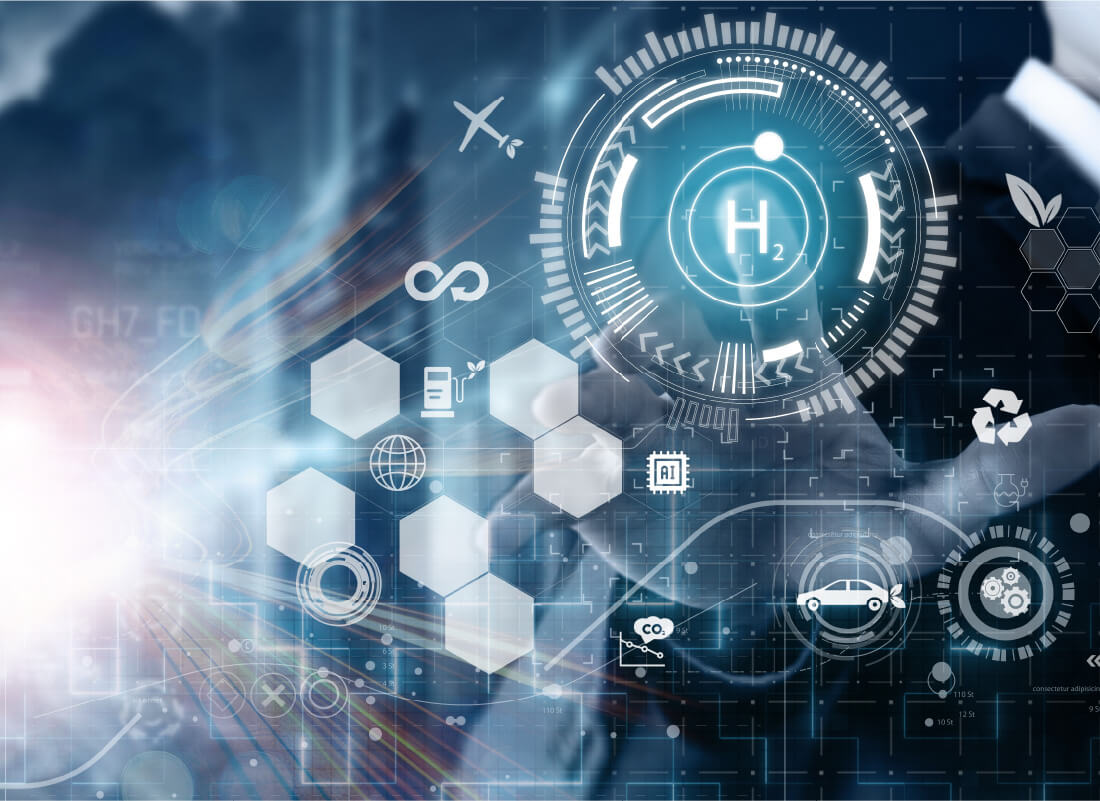
Intensifying efforts are underway to develop technology for building a supply chain for hydrogen, which is expected to serve as a fuel that is free of CO2 emissions, and ammonia, which will serve as its carrier. The fuels are likely to see expanded use in the future in boilers. We are conducting research and development with the goal of establishing appropriate combustion methods and utilization technologies for these fuels.
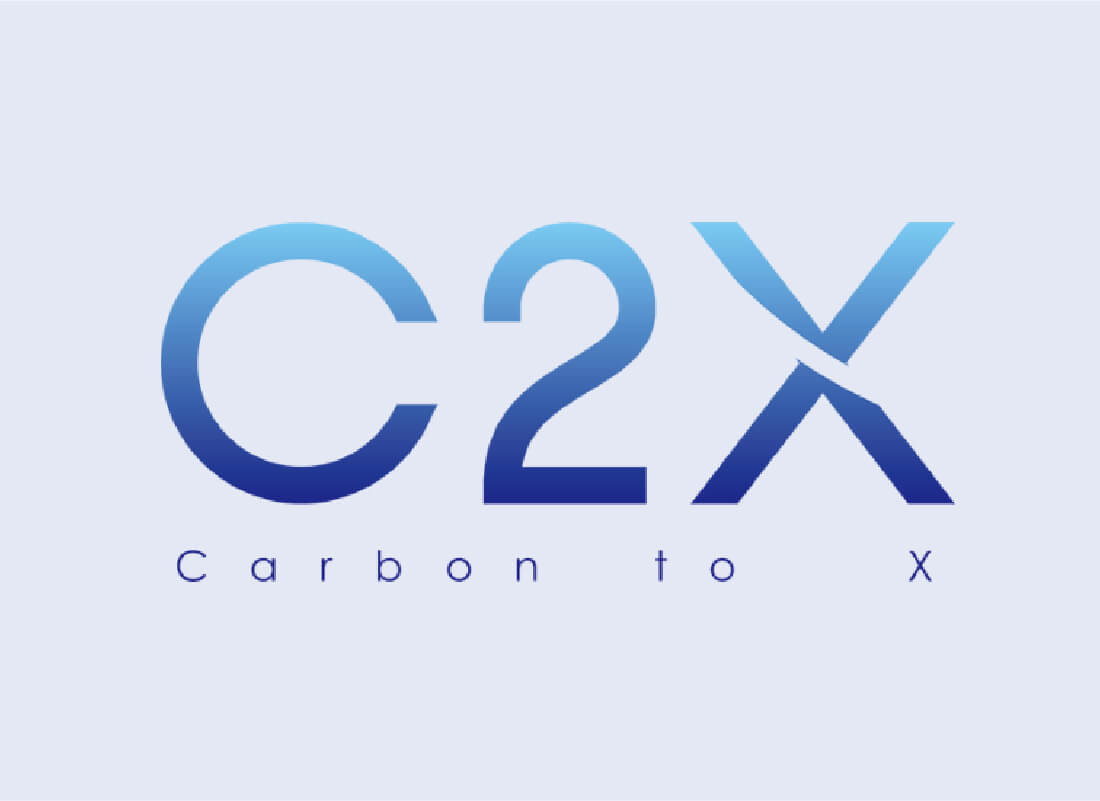
We are participating in projects to commercialize CCUS technology, for example to underpin businesses that utilize CO2 as a raw material in the production of fuels and chemical products. Takuma will contribute to the realization of a decarbonized society by working with municipal governments and local communities to conceptualize and study next-generation waste treatment plants.